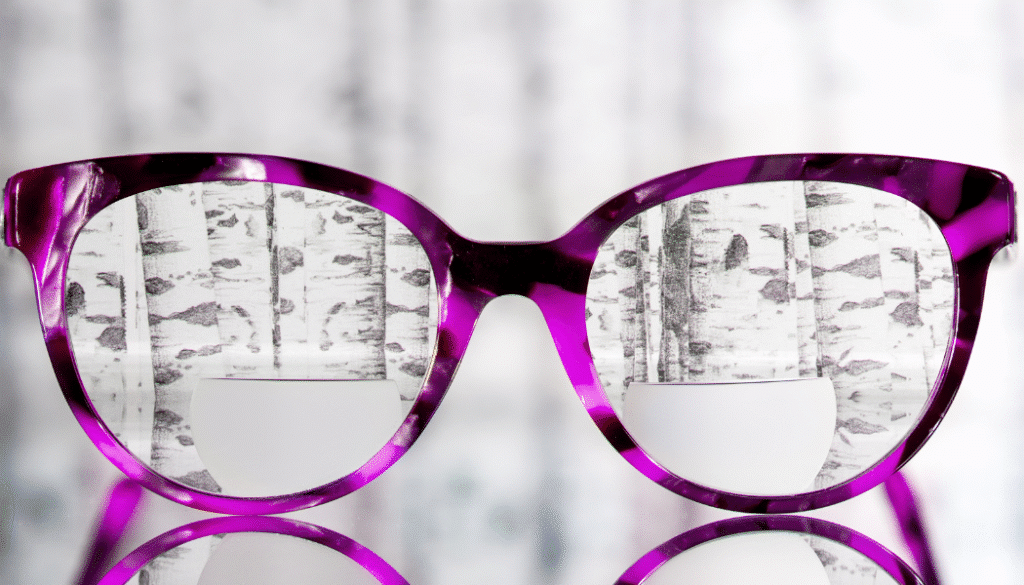
As we age, it’s common to struggle with vision at different distances. Some people notice they can’t read close text, while others find distance tasks harder. For many, both issues appear at the same time. Bifocal lenses have been a long-standing solution to this problem.
Bifocals are dual-vision eyeglass lenses with two separate zones. The top section corrects distance vision, while the lower part helps with reading or near work. These reading and distance lenses allow clear vision at both ranges without switching glasses.
The lens surface is split into sections called segmented lens options. Each section has a different prescription. A small adjustment of the head or eyes directs vision through the correct zone. For example, when looking at a road sign, wearers use the top portion. For reading a book, they look through the lower section.
This design makes bifocals an effective presbyopia lens solution. Presbyopia is the gradual loss of near vision that occurs with age, usually after 40. Bifocals let people continue daily tasks without switching between separate pairs of glasses.
Bifocal glasses date back hundreds of years. They are often linked to Benjamin Franklin, who combined two lens powers into a single frame. Since then, bifocals have remained popular and practical for near-far vision correction. Modern technology has improved bifocal lens clarity, frame designs, and material strength.
Today’s bifocal eyewear designs come in many shapes and frame styles. From classic looks to modern frames, bifocals no longer feel outdated. They can be paired with coatings like anti-glare, scratch resistance, or UV protection for added comfort. Some options also include polycarbonate materials for durability.
Even with new alternatives, bifocals remain a reliable choice for those who want clear separation between distance and near vision. For patients who prefer simplicity, segmented lens options still provide excellent clarity.
Bifocal lenses continue to play an important role in vision care. They offer simple, effective near-far vision correction for presbyopia and other age-related vision changes. Though progressives and trifocals are available, bifocals remain popular for their direct design, bifocal lenses clarity, and affordability.
Talk to your eye doctor about which option best fits your needs. Whether you choose bifocals, trifocals, or progressives, today’s technology provides clear sight at every distance.
It helps with near-far vision correction, supporting both distance and reading needs.
It depends. Bifocals provide clear division, while progressives offer smooth vision transition lenses.
Varifocals (progressives) avoid visible lines, but bifocals may be simpler for some users.
Presbyopia lens solutions vary. Multifocals cover more ranges, while bifocals focus on two.